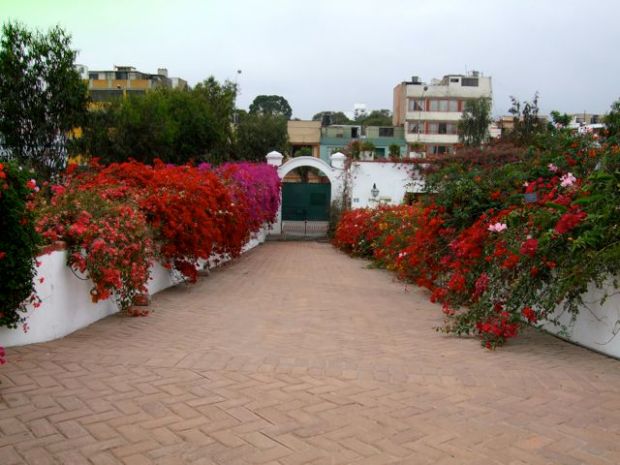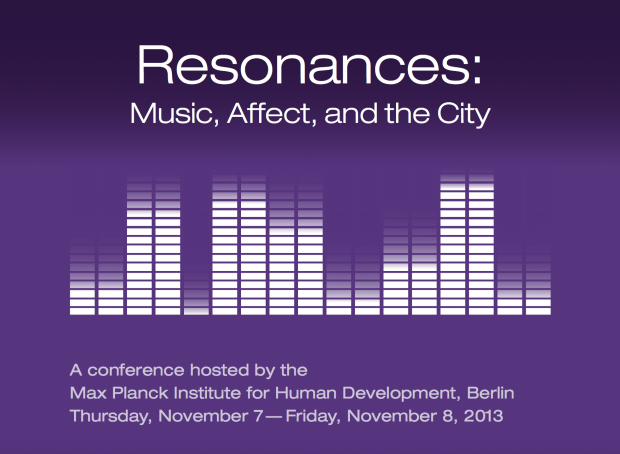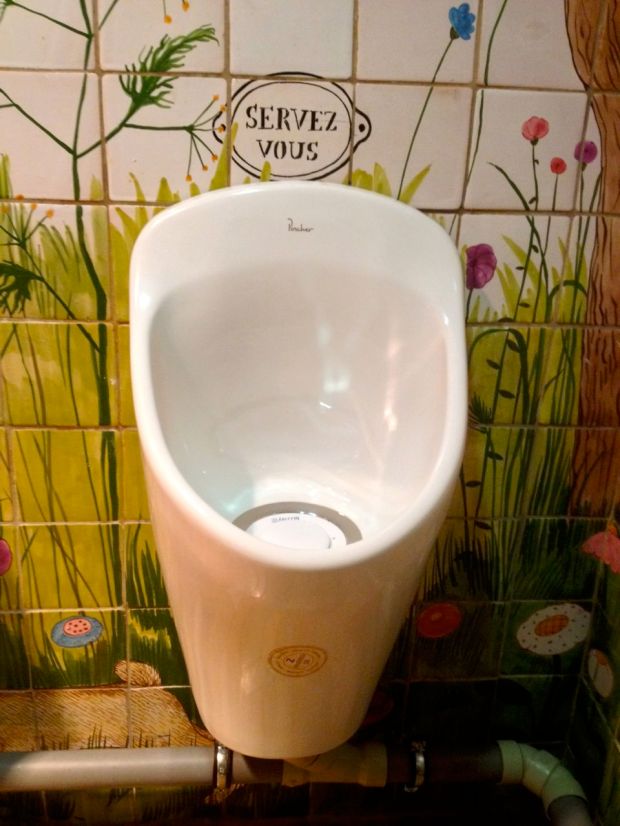 o, last week, an article of mine was published on Resident Advisor, entitled “An alternate history of sexuality in club culture.” It’s success was truly surprising—especially considering that the whole thing ran well over 8,000 words long! Despite its exceptional length, one of the hardest challenges I had in writing this article was to keep it short(er), because there was just so much to write about. That’s also a good thing, in the sense that it means that there’s still a lot to say about queer nightlife and club culture, but I was especially pained to have only included a few brief quotes from the fantastic email-interview I did with Terre Thaemlitz/DJ Sprinkles. Despite being a very busy producer, speaker, alternative historian, etc., she was immensely generous with her time, answering all of my questions in great detail. It seemed a tragedy that most of the interview wouldn’t make it into the RA article, so I’ve arranged to have the full interview published here (more…)
o, last week, an article of mine was published on Resident Advisor, entitled “An alternate history of sexuality in club culture.” It’s success was truly surprising—especially considering that the whole thing ran well over 8,000 words long! Despite its exceptional length, one of the hardest challenges I had in writing this article was to keep it short(er), because there was just so much to write about. That’s also a good thing, in the sense that it means that there’s still a lot to say about queer nightlife and club culture, but I was especially pained to have only included a few brief quotes from the fantastic email-interview I did with Terre Thaemlitz/DJ Sprinkles. Despite being a very busy producer, speaker, alternative historian, etc., she was immensely generous with her time, answering all of my questions in great detail. It seemed a tragedy that most of the interview wouldn’t make it into the RA article, so I’ve arranged to have the full interview published here (more…)
academia
Resonances: Music, Affect, and the City
 ast week, I organized a two-day conference here in Berlin, which took the affective dimensions of urban soundscapes as its central theme. Running November 7th–8th at the Max Planck Institute for Human Development, the conference featured a mix of scholarly presentations and discussion panels that included professionals out of Berlin’s local music scene, as well as music/sound-related evening events (see the conference program at the end of this post). I’m still recovering from the whole thing (as well as from an opportunistic flu that jumped into my body as soon as the conference came to a close), but I wanted to post some of my impressions of the conference, while they are still vivid in my memory. Considering the vanishingly small operating budget and a similarly tight planning period, I’m somewhat amazed I was able to pull it off at all.
ast week, I organized a two-day conference here in Berlin, which took the affective dimensions of urban soundscapes as its central theme. Running November 7th–8th at the Max Planck Institute for Human Development, the conference featured a mix of scholarly presentations and discussion panels that included professionals out of Berlin’s local music scene, as well as music/sound-related evening events (see the conference program at the end of this post). I’m still recovering from the whole thing (as well as from an opportunistic flu that jumped into my body as soon as the conference came to a close), but I wanted to post some of my impressions of the conference, while they are still vivid in my memory. Considering the vanishingly small operating budget and a similarly tight planning period, I’m somewhat amazed I was able to pull it off at all.
Plans for this conference first arose last July, (more…)
Lubricating Social Frictions
 he image of the industrial economy as a great machine oiled by the sweat and blood of its workers has been a common trope for Marxist and anti-capitalist writers. Much has changed since the industrial revolution inspired such metaphors, but the costs of lubricating social processes remains a relevant issue in these post-industrial, accelerated, and uncertain times. Based on the last two decades of social and cultural studies, one could gather that the world we live in is becoming increasingly fluid (Bauman) and mobile (Urry). But what enables social and cultural “matter” to flow at increasing rates?
he image of the industrial economy as a great machine oiled by the sweat and blood of its workers has been a common trope for Marxist and anti-capitalist writers. Much has changed since the industrial revolution inspired such metaphors, but the costs of lubricating social processes remains a relevant issue in these post-industrial, accelerated, and uncertain times. Based on the last two decades of social and cultural studies, one could gather that the world we live in is becoming increasingly fluid (Bauman) and mobile (Urry). But what enables social and cultural “matter” to flow at increasing rates?
This question is inspired by discussions that took place during the Touring Consumption conference at Karlshochschule this past weekend (more…)
La Mission: Life in a Hedonist-Doomsday-Cult-Art-Collective
 a Mission has been a big part of my life here in Berlin since last summer, but strangely enough it’s taken me nearly a year to get around to writing about it on this blog. Maybe I wanted to wait until the first round of multimedia craziness emerged from this performance art collective / music label / magazine, before I started crowing about it. Maybe I was too shy about discussing my own creative work. No, wait…I remember why: I was on the academic job market last fall, which meant that I got nothing else done.
a Mission has been a big part of my life here in Berlin since last summer, but strangely enough it’s taken me nearly a year to get around to writing about it on this blog. Maybe I wanted to wait until the first round of multimedia craziness emerged from this performance art collective / music label / magazine, before I started crowing about it. Maybe I was too shy about discussing my own creative work. No, wait…I remember why: I was on the academic job market last fall, which meant that I got nothing else done.
La Mission is a lot of things, including a satirical doomsday cult, a music label, a magazine, an art collective, and a group of dance-music-lovers with a very dirty sense of humor. La Mission’s identity is perhaps best summed up by cult-leader El Jefe’s manifesto/sermon, “The Sermon for the Steps of the Ziggurat in our Hearts,” published in our first La Mission magazine: (more…)
New Publication, New Gig, Still in Berlin

Front cover of Musical Performance and the Changing City (2013), edited by Carsten Wergin and Fabian Holt.
 ikes! It’s been embarrassingly long since I last posted something on here. If you’re still reading, thanks for not abandoning this blog out of boredom. As you might have guessed, things have been very, very, very busy over the last few months. The last major post I had put on here had been about all of my troubles getting a !@#$ing residency permit for Germany, and I’m happy to state that this has been more or less resolved—although not precisely in the manner I had intended.
ikes! It’s been embarrassingly long since I last posted something on here. If you’re still reading, thanks for not abandoning this blog out of boredom. As you might have guessed, things have been very, very, very busy over the last few months. The last major post I had put on here had been about all of my troubles getting a !@#$ing residency permit for Germany, and I’m happy to state that this has been more or less resolved—although not precisely in the manner I had intended.
In any case, I have a great deal of updates for this blog, far more than I can fit into even a week of daily blog posts. It’ll take me a while to get through the backlog, but I should post the two most important pieces of news first: 1) I have another publication fresh off the presses, and (more…)
Fuzzy Intimacies: Cats and Gestures of Intimacy
 ust yesterday, I was waiting to meet an academic colleague for an afternoon Kaffee und Kuchen (coffee and cake, something of a German ritual). I was out in Dahlem—a southern suburb of Berlin and the home of the Freie Universität—sitting on the outdoor patio of a café at corner of Garystraße and Ihnestraße. Aux Délices Normands, it was called; pretty solid French pastries and cakes, lackluster coffee, pleasant seating.
ust yesterday, I was waiting to meet an academic colleague for an afternoon Kaffee und Kuchen (coffee and cake, something of a German ritual). I was out in Dahlem—a southern suburb of Berlin and the home of the Freie Universität—sitting on the outdoor patio of a café at corner of Garystraße and Ihnestraße. Aux Délices Normands, it was called; pretty solid French pastries and cakes, lackluster coffee, pleasant seating.
When I first came to sit down, there was a small, grey-and-white cat sitting on the bench opposite me at the table. It was (more…)
The Post-Conferences Round-Up
 oly crapsticks! I’ve been away from LMGMblog for an inexcusable amount of time. I’ve been quite the busy bee, though. I got a few things published here and there, did some editing on a dissertation chapter that should hopefully turn into a journal article, gave two different papers at two conferences on either side of the Atlantic, and started a new research phase for my current “techno-tourism” project. Oh, and I saw Laurent Garnier play in both Berghain and Panorama Bar last month. I’ve been very busy.
oly crapsticks! I’ve been away from LMGMblog for an inexcusable amount of time. I’ve been quite the busy bee, though. I got a few things published here and there, did some editing on a dissertation chapter that should hopefully turn into a journal article, gave two different papers at two conferences on either side of the Atlantic, and started a new research phase for my current “techno-tourism” project. Oh, and I saw Laurent Garnier play in both Berghain and Panorama Bar last month. I’ve been very busy.
So, here’s a more detailed list of what LMGM’s been up to these past two months, with relevant links and pretty pictures:
(more…)
Now at IASPM: Doing Nightlife Fieldwork Series
 xciting news, folks! My series, “Doing Nightlife Fieldwork,” has been cross-posted by the IASPM-US blog with the title “Doing Nightlife Research.” That’s the US chapter of the International Association for the Study of Popular Music. I’m very excited to be seeing this circulating to a wider audience of popular music scholars, especially because I hope that this will prompt more of us to talk about how we do our research. Maybe there will be enough interest to generate a special issue on the topic…
xciting news, folks! My series, “Doing Nightlife Fieldwork,” has been cross-posted by the IASPM-US blog with the title “Doing Nightlife Research.” That’s the US chapter of the International Association for the Study of Popular Music. I’m very excited to be seeing this circulating to a wider audience of popular music scholars, especially because I hope that this will prompt more of us to talk about how we do our research. Maybe there will be enough interest to generate a special issue on the topic…
In any case, here are the links to the series on IASPM-US Blog:
Doing Nightlife Research I: Introduction
Doing Nightlife Fieldwork III: Interviewing

Entrance to the Larco Museum of Pre-Columbian History in Lima, Peru. Why should all these pictures be party pictures, anyway?
 eep reading, folks! This is the last installment of the series on fieldwork methodology for ethnographic research in nightlife scenes—in other words, how to study a dance music scene without getting in the way. Last Thursday, I posted a brief list of problems that nightlife scenes pose to conventional modes of ethnographic research. Unsurprisingly, most of those issues had to do with the circumstances of EDM (electronic dance music) events themselves; and so, on the next day I wrote another article on “going out” for fieldwork, mostly detailing my own methods and giving a few bits of general advice. Todays post (and the final one in this series) covers a more conventional but no less important aspect of music ethnography: interviews! While the process of actually interviewing someone off-site (i.e., away from an EDM event) is pretty similar to other interviewing situations, there are some important things to keep in mind when (more…)
eep reading, folks! This is the last installment of the series on fieldwork methodology for ethnographic research in nightlife scenes—in other words, how to study a dance music scene without getting in the way. Last Thursday, I posted a brief list of problems that nightlife scenes pose to conventional modes of ethnographic research. Unsurprisingly, most of those issues had to do with the circumstances of EDM (electronic dance music) events themselves; and so, on the next day I wrote another article on “going out” for fieldwork, mostly detailing my own methods and giving a few bits of general advice. Todays post (and the final one in this series) covers a more conventional but no less important aspect of music ethnography: interviews! While the process of actually interviewing someone off-site (i.e., away from an EDM event) is pretty similar to other interviewing situations, there are some important things to keep in mind when (more…)
Doing Nightlife Fieldwork II: Going Out
 uckily, I managed to find a bit of time today to write this second part to this series, so I won’t be saddled with guilt about making promises to write more on my blog and then not fulfilling them. Yay productivity! So, to review: yesterday I wrote “Doing Nightlife Fieldwork,” which claimed that there wasn’t enough helpful writing out there on how to conduct ethnographic fieldwork in nightlife scenes. It’s a problem, I think, that we don’t at least have a shared idea of what “best practices” would look like; this is an important ethical and institutional issue for EDM studies, for sure. I listed a few ways that nightlife settings throw a wrench in conventional ethnographic methods and invited other folks to write in the comments and/or write response-posts on their own blogs. The comments have already been great, and there’s talk of a few of my EDM-scholars-with-blogs buddies preparing their own posts. Today, I’m going to focus on one of the main elements of music ethnography: attending music events and engaging in participant-observation. I’ll describe how (more…)
uckily, I managed to find a bit of time today to write this second part to this series, so I won’t be saddled with guilt about making promises to write more on my blog and then not fulfilling them. Yay productivity! So, to review: yesterday I wrote “Doing Nightlife Fieldwork,” which claimed that there wasn’t enough helpful writing out there on how to conduct ethnographic fieldwork in nightlife scenes. It’s a problem, I think, that we don’t at least have a shared idea of what “best practices” would look like; this is an important ethical and institutional issue for EDM studies, for sure. I listed a few ways that nightlife settings throw a wrench in conventional ethnographic methods and invited other folks to write in the comments and/or write response-posts on their own blogs. The comments have already been great, and there’s talk of a few of my EDM-scholars-with-blogs buddies preparing their own posts. Today, I’m going to focus on one of the main elements of music ethnography: attending music events and engaging in participant-observation. I’ll describe how (more…)







